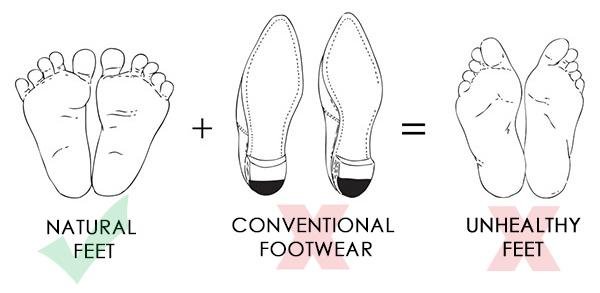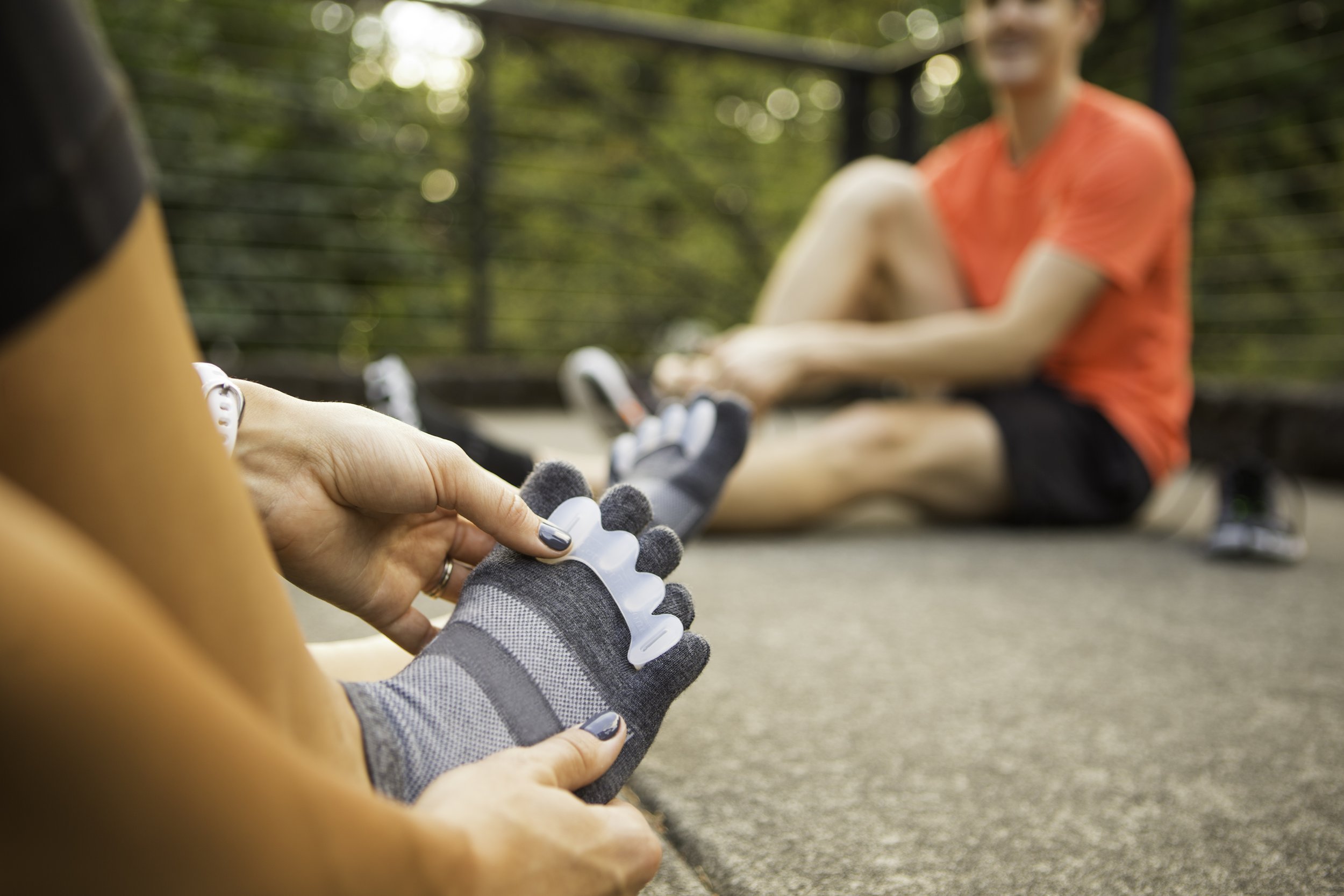Foot Health
The Feet and Foot Health
The foot’s natural and healthy starting point
The feet, like all the other parts of your body, are quite fascinating. If you’re like me and most of the rest of the population, you take your feet for granted. This works out fine for you until your body, or more specifically your feet, start to present with pain. Do you have a bunion, plantar fasciosis, or some other form of foot pain? Do you rely on your feet to get you through training and participation in a running event like a 5k or a marathon? Do you want your feet to stay healthy and pain free? If you can answer yes to any of these questions, continue reading.
Each of your feet has 26 bones and countless tendon and ligament attachments. They are designed for tremendous versatility. They have the ability to present with great dexterity while at other times with great stability. When you are born, your feet most closely resemble the shape of a triangle. Your heel is one point (calcaneus), your big toe another (hallux), and the last is that of your 5th toe (pinky toe). Your toes were the widest part of your foot. Take a moment, pull off your shoes and socks, and look at your feet. Are they widest at the toes? Do your toes have some space between them? Are your toes flat and unrotated? Are your feet free of pain and injury? Are your feet mobile? If so, you are one of the rare few that made it through your youth and life to this point unscathed. For the rest of us, our toes are scrunched together, rotated, curled under, overlapping, and present with pain and dysfunction of one sort or another.
The all too common progression from healthy to unhealthy feet.
While there are genetic influences that affect the structure of your foot, what largely influences the evolving structure and function of your feet over time are the environments you place them in. In other words, the type of footwear you place your feet in from the early days of your life, throughout your childhood, and eventually into adulthood has a monumental effect on how your feet evolve. Bunions and many other foot conditions are NOT passed down to you from your biological mother and father. You were conditioned to wear footwear that looked cool, but didn’t support the health and natural structure and function of your feet. Most of the foot issues people experience these days are in large part, if not entirely, due to the structural design features of the footwear they wore and are wearing presently. In many cases, surgery and other invasive procedures can be avoided by adopting foot healthy footwear and learning and implementing some foot self care strategies. To learn more about how I can support you in addressing your chronic foot pain, Contact Me today.
Adopt Foot Healthy Footwear
While there are genetic influences that affect the structure of your foot, what largely influences the evolving structure and function of your feet over time are the environments you place them in. In other words, the type of footwear you place your feet in from the early days of your life, throughout your childhood, and eventually into adulthood has a monumental effect on how your feet evolve. Bunions and many other foot conditions are NOT passed down to you from your biological mother and father. You were conditioned to wear footwear that looked cool, but didn’t support the health and natural structure and function of your feet. Most of the foot issues people experience these days are in large part due to the structural design features of the footwear they have worn and are wearing presently. In most cases, foot pain can be resolved and surgery and other invasive procedures can be avoided by adopting foot healthy footwear and implementing foot self care strategies.
Foot Healthy Footwear on the Left; Conventional Footwear on the Right
Let’s explore your footwear. Grab any shoe from your closet or look at those that are currently on your feet. Dress shoes, running sneakers, and casual footwear alike. There are four key features to examine that contribute to the foot issues you may be experiencing or could experience in the future. The first feature is the toe box. The second is heel elevation. The third is the degree of support the sole of the shoe provides. The fourth and final feature to examine is whether or not the shoe has toe spring. Do the features of your shoes more closely match the image above on the left or the one on the right? To learn more about foot healthy footwear or to get guidance on what foot healthy footwear would be best for you, Contact Me today.
Correct Toes - Toe Spacers
Correct Toes are specifically designed spacers that go between each toe to keep them from overlapping or pressing against one another. They can be worn barefoot, inside conventional socks, over toe socks, and inside many foot healthy footwear brands like Altar, Lems, Vivo, Zero, etc. during activities of all kinds. They were created by Dr. Ray McClanahan, a sports podiatrist and elite distance runner, after experiencing recurring running injuries and chronic foot pain. Rather than settle for simply managing the issue, which is how most approach the presentation of foot pain and deformity, he wanted to treat the root cause of the pain and injuries. Dr. McClanahan dedicated his time to researching, performing foot wear analysis and studying the feet of athletes and came to the realization that natural toe splay is the key to foot health.
To learn more about Correct Toes or to pick up a pair, Contact Me today. You can also visit the Correct Toes website to see more resources.




